Is your fridge refusing to come back to life after being unplugged?
When your fridge doesn’t turn on after unplugging it, it can be frustrating and worrying. And what can you do to fix it?
In this article, we’ll explore the common causes behind a fridge’s failure to turn on after being unplugged.
Also, we’ll provide troubleshooting tips to help you get your fridge up and running again.
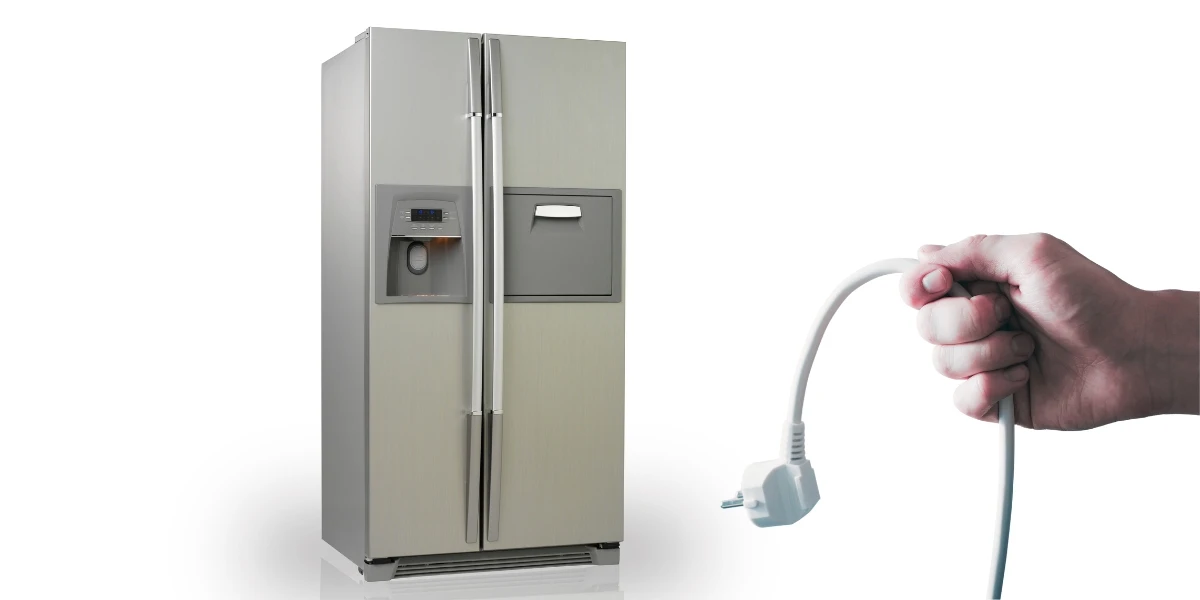
Why Won’t My Fridge Turn On After Unplugging?
Here are a few common reasons why your refrigerator isn’t turning on after unplugging it.
Power Supply Problems
If your fridge won’t turn on after unplugging it, the first thing you should check is the power supply.
Ensure that the refrigerator is properly plugged into a functioning electrical outlet. Verify that the outlet itself works by plugging in another device.
You should also inspect the power cord and outlet for signs of damage or disconnection.
Tripped Circuit
Breaker Sometimes, a tripped circuit breaker can prevent your fridge from turning on. Head to your home’s electrical panel and check if any breakers have tripped.
If you find a tripped breaker, reset it by flipping it to the “Off” position and then back to the “On” position.
If the breaker keeps tripping, it may indicate an underlying electrical problem.
Defective Start Relay
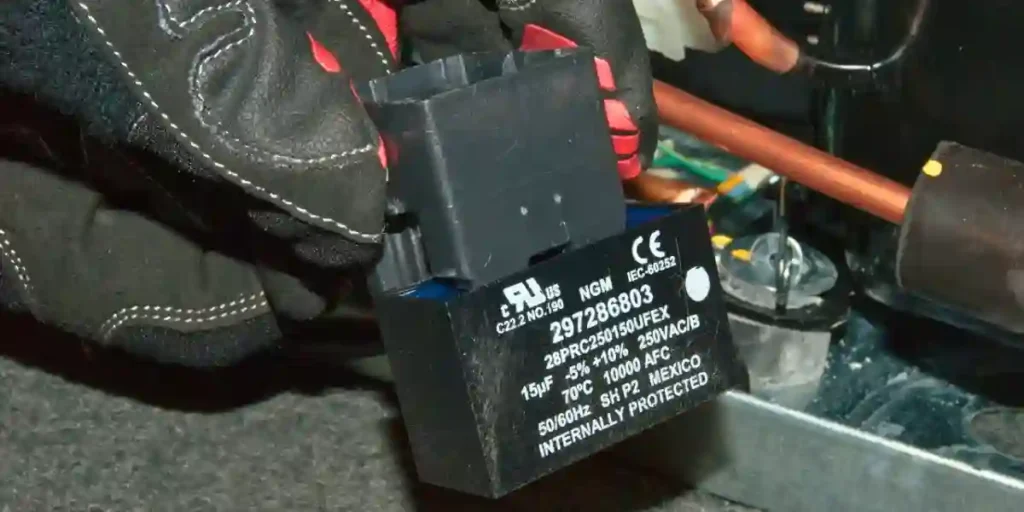
The start relay is a component responsible for initiating the compressor’s operation in your refrigerator. If the start relay is defective, it can prevent the fridge from turning on.
Unplug the fridge, locate the relay (usually near the compressor), and remove it carefully. It’s advisable to replace the start relay if you notice any signs of burning, damage, or loose wires.
Overheated Compressor
An overheated compressor can cause your fridge to refuse to turn on. After unplugging the fridge, the compressor needs time to cool down, so this often happens.
Give the compressor ample time to cool off before attempting to turn on the refrigerator again.
Proper ventilation is essential to prevent overheating and to prevent the fridge from overheating.
Faulty Thermostat
A faulty thermostat can also be the reason behind your fridge’s refusal to turn on. If the thermostat malfunctions, the compressor may not start if the refrigerator is too cold.
To test the thermostat, turn the temperature dial to the coldest setting and listen for a clicking sound.
If you don’t hear the click, it’s likely that the thermostat is faulty and needs to be replaced.
Malfunctioning Control Board
In some cases, a malfunctioning control board can be the root cause of the problem. As the refrigerator’s brain, the control board coordinates various functions.
If the control board fails, it can disrupt the fridge’s operation and prevent it from turning on. It’s best to seek professional help to diagnose and replace a faulty control board.
Internal Component Failure
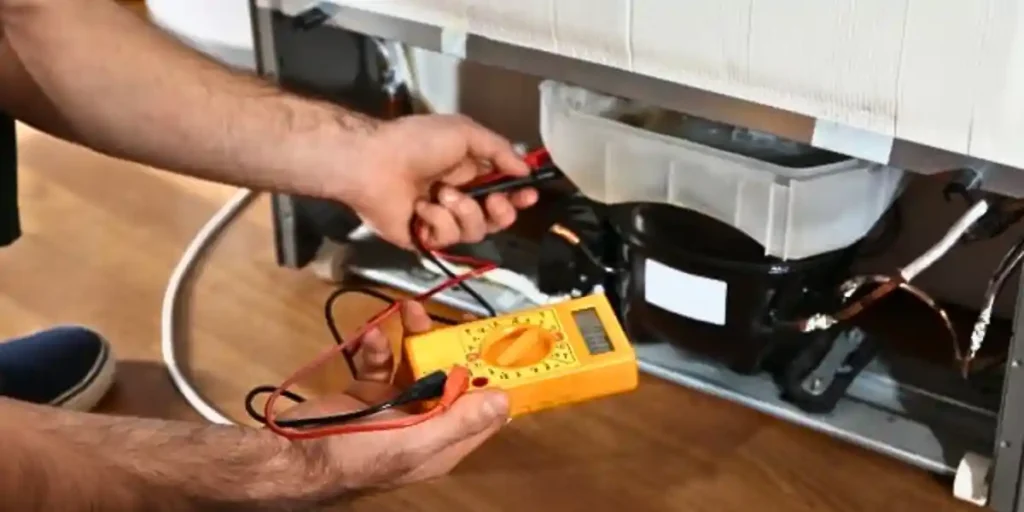
If none of the above issues seem to be the problem, there’s a possibility of internal component failure.
Several vital parts may have malfunctioned, requiring professional repair. A qualified technician should inspect and diagnose your fridge’s internal components.
Troubleshooting Steps for a Fridge That Won’t Turn On
Check the Power Supply
Check that a fridge is properly connected to a power source before troubleshooting it. Verify that the refrigerator is securely plugged into a functioning electrical outlet.
If it is, try plugging in another device to the same outlet to confirm if it receives power. If not, there may be an issue with the outlet or the electrical circuit.
Inspect the Power Cord and Outlet
Next, examine the power cord for any visible damage or signs of wear. Ensure that the cord is not frayed, torn, or pinched.
Inspect the outlet for any loose connections or burnt marks. You may need to replace or repair the power cord or outlet if you notice any problems.
Check the Circuit Breaker
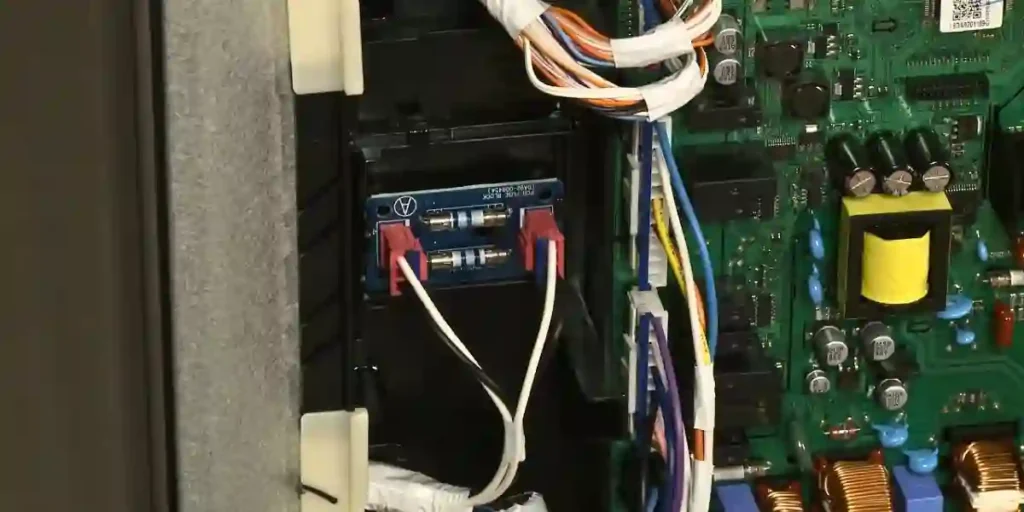
A tripped circuit breaker can also prevent the fridge from turning on. Locate your home’s electrical panel and check for any tripped breakers.
Switch it to the “Off” position, then back to the “On” position if you find one. If the breaker trips again, there may be an electrical issue that requires professional assistance.
Allow the Compressor to Cool
Trying to turn on a recently unplugged fridge may cause the compressor to overheat. The compressor needs time to cool down before it can operate again.
Leave the fridge unplugged for at least 15-30 minutes to allow the compressor to cool off. Once the time has passed, plug it back in and try turning it on.
Test the Start Relay
The start relay is a component that initiates the compressor’s operation. A defective start relay can prevent the fridge from turning on.
Locate the start relay, typically found near the compressor, and remove it carefully.
Inspect it for any signs of damage, such as burnt marks or loose wires. If you notice any issues, consider replacing the start relay.
Verify the Thermostat
The thermostat regulates the temperature inside the refrigerator. A malfunctioning thermostat can prevent the fridge from starting.
Set the temperature dial to the coldest setting and listen for a clicking sound. If you don’t hear a click, the thermostat may be faulty and should be replaced.
Check the Control Board
The control board acts as the brain of the refrigerator, coordinating various functions. If the control board malfunctions, it can affect the fridge’s operation.
Inspect the control board for any visible signs of damage or burnt marks. In case of a faulty control board, it’s recommended that you seek professional assistance.
Call a Professional Technician
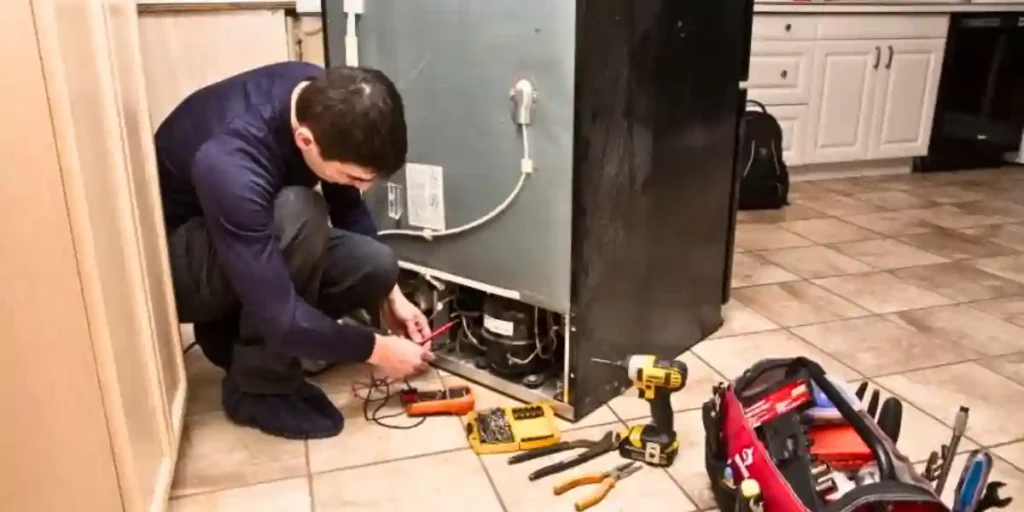
If all the above steps fail to resolve the issue, it’s possible that there is an internal component failure.
The compressor, condenser fan, or other essential parts may require professional attention.
Identifying the problem and repairing it or replacing the components requires a qualified technician.
Factors That Can Impact Fridge Performance After Unplugging
Here are some key factors to consider:
Temperature Regulation:
When a fridge is unplugged, the internal temperature begins to rise. Unplugged fridges can take longer to reach their desired temperature if the ambient temperature is high.
Cooling may take longer because the compressor needs to work harder.
Condenser Coil Efficiency:
The condenser coils are responsible for dissipating heat from the refrigerator. If the coils are dirty or covered in dust and debris, their efficiency can be compromised.
As a result, the fridge may take longer to reach the desired temperature after being unplugged.
Air Circulation:
Proper air circulation around the refrigerator is essential for efficient cooling.
The fridge will not cool down if placed too close to walls, cabinets, or other appliances. Ensure that there is sufficient space around the fridge for proper ventilation.
Compressor Overload:
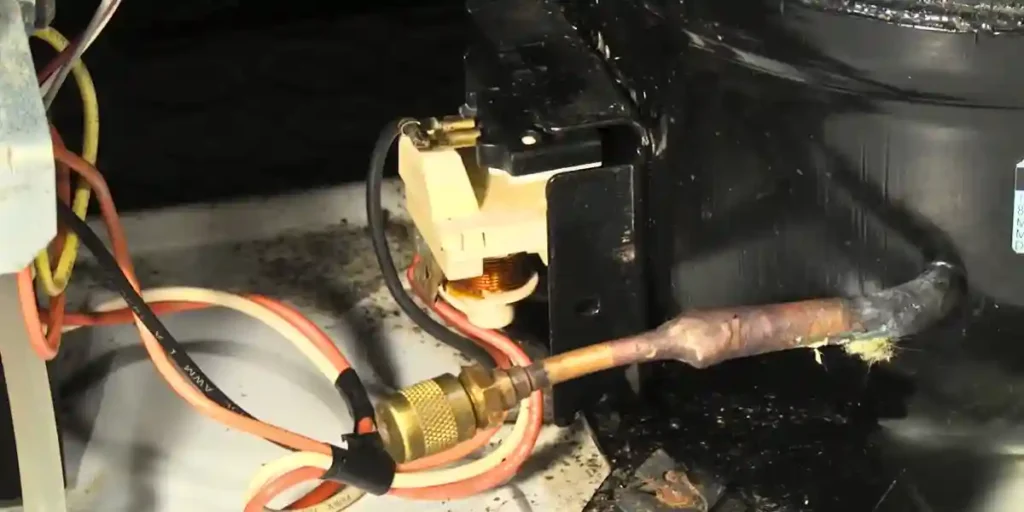
If the fridge is unplugged and immediately plugged back in, the compressor may face an overload.
The compressor needs time to stabilize and cool down before it can start functioning optimally again.
It can cause compressor failure if the compressor is frequently power cycled without adequate rest.
Component Wear and Tear:
Various refrigerator components can wear out over time, affecting performance. After being unplugged, components that are aging may struggle to operate effectively.
A faulty fridge may require professional service if it consistently fails to perform after unplugging.
Electrical Issues:
Loose connections, faulty wiring, or tripped circuit breakers can affect fridge performance.
If these issues are present, the refrigerator will not receive adequate power, resulting in poor cooling.
Thoroughly inspect the electrical connections and check for any signs of damage or malfunction.
Appliance Settings:
It is possible for certain settings and modes to affect how well a fridge performs after unplugging.
If the fridge is in power-saving or vacation mode, it may take longer to cool down. Refer to the appliance’s manual to ensure that the settings are optimized for efficient cooling.
Maintenance Tips to Prevent Fridge Failure
Here are some maintenance tips to extend the life of your refrigerator:
Clean the Condenser Coils:
Condenser coils, located under or at the back of fridges, can accumulate dust and debris.
Clean them regularly, ideally every six months, to maintain proper heat dissipation.
Use a vacuum or a coil brush to gently remove the dirt, allowing the coils to function efficiently.
Check and Replace Door Seals:
Leaving cold air in can increase energy consumption and decrease cooling efficiency.
Inspect the door seals regularly for any cracks, tears, or signs of deterioration. If needed, replace the seals to ensure a tight seal and proper insulation.
Keep the Fridge Clean:
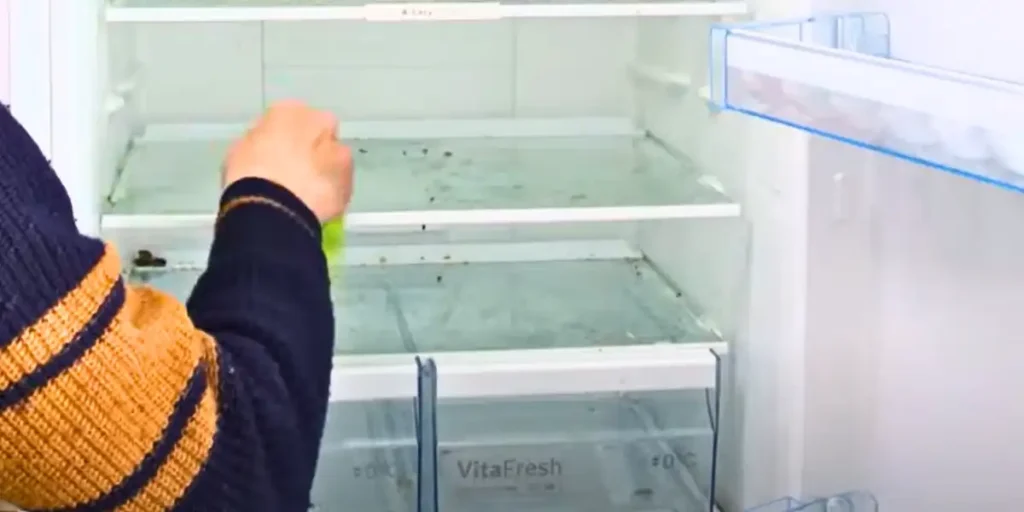
Regularly clean the interior of the fridge to remove spills, stains, and food debris. Use mild detergent and warm water to wipe down the shelves, drawers, and walls.
Avoid using abrasive cleaners that can damage the surfaces. Defrost the freezer compartment when ice buildup exceeds 1/4 inch to maintain efficient cooling.
Set the Right Temperature:
You should set the temperature of your fridge and freezer according to the manufacturer.
It puts unnecessary strain on the compressor when the fridge is too cold or too warm.
Use a refrigerator thermometer to ensure the temperatures are within the recommended range.
Avoid Overloading the Fridge:
Overloading the fridge with food can restrict proper airflow, impeding the cooling process.
Organize items in a way that allows for adequate circulation of cold air. Avoid blocking the vents and leave space between items for efficient cooling.
Keep the Fridge Level:
Ensure that your refrigerator is level by using a spirit level. Unleveled fridges may have problems closing doors properly and perform poorly.
Adjust the leveling legs or use shims to achieve a stable and even position.
Check and Clean the Drain Line:
Debris or ice can clog the freezer compartment drain line, causing leaks or ice buildup.
Regularly inspect and clean the drain line to prevent these issues. Use a mixture of warm water and mild detergent to flush out any blockages.
Regularly Inspect Electrical Components:
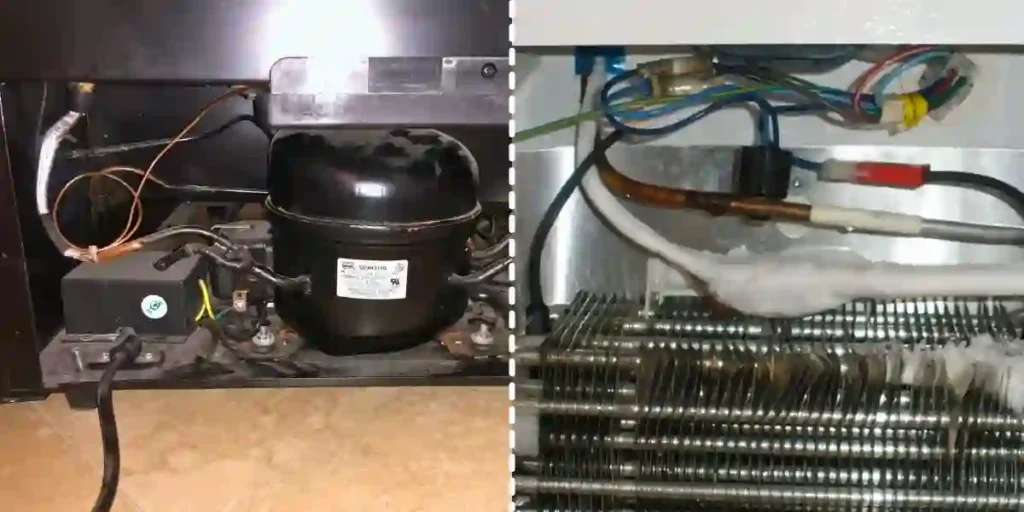
Periodically check the power cord, plug, and electrical connections for any signs of damage or wear.
When you notice frayed wires or loose connections, have them repaired or replaced.
Keep hot food out of the fridge:
Before placing hot food in the refrigerator, allow it to cool down to room temperature.
If hot items are put directly into the refrigerator, the compressor works harder to keep it cool.
Schedule Professional Maintenance:
Consider scheduling regular professional maintenance for your refrigerator. It is imperative to hire a technician qualified to inspect, clean, and check for any potential issues.
Frequently Asked Questions About Fridge Failure After Unplugging
Why Is It Important To Clean The Condenser Coils Regularly?
A dirty condenser coil makes the compressor work harder because it prevents heat from dissipating.
Regular cleaning helps maintain optimal performance and prevents potential fridge issues.
Is A Faulty Thermostat To Blame For My Fridge Not Turning On?
Yes, a faulty thermostat can prevent your fridge from turning on. The fridge won’t cool if the thermostat fails to signal the compressor to start.
If you suspect a faulty thermostat, consider replacing it or consulting a professional technician.
What Should I Do If My Fridge Fails To Turn On Even After Troubleshooting?
You should contact a qualified technician if the fridge fails to start after troubleshooting.
Repairs or replacements can be performed by them to get your refrigerator up and running again.
Conclusion
Don’t fret if your fridge won’t turn on after unplugging. Check the power supply, clean the condenser coils, and ensure proper ventilation.
Seek professional assistance if issues persist. Test the start relay, thermostat, and control board.
Keep your fridge running smoothly with regular maintenance and prevent future failures.
You’ve got the power to troubleshoot and maintain your fridge’s performance!
